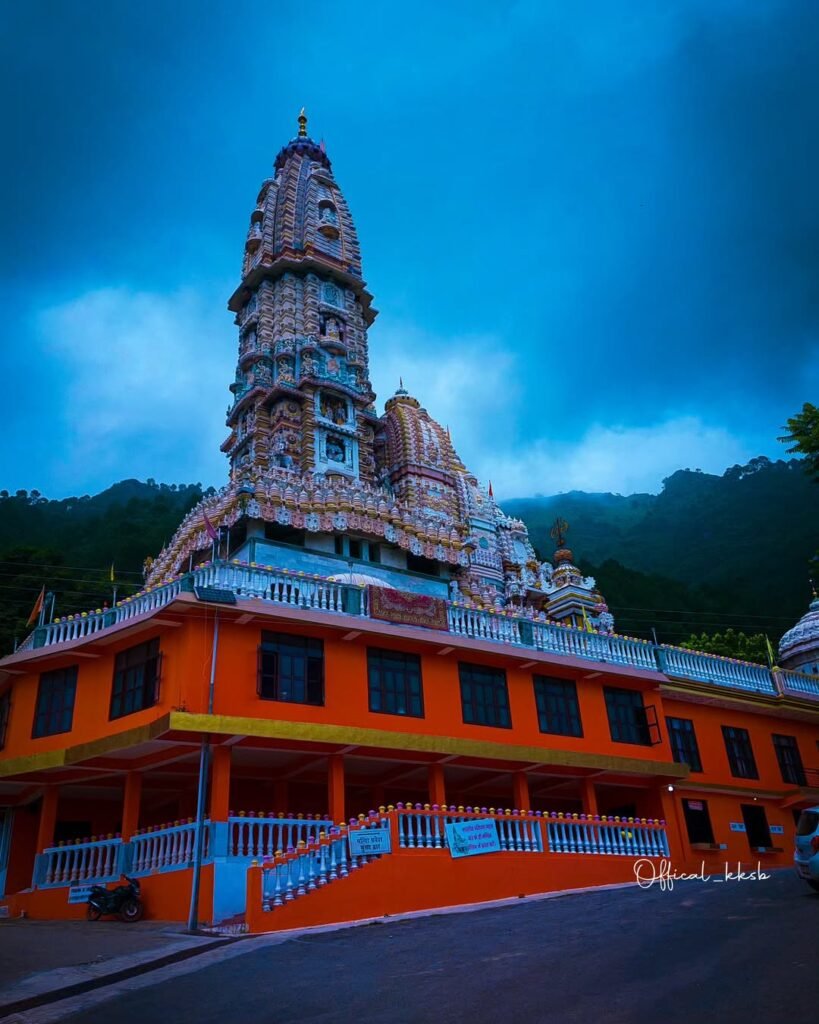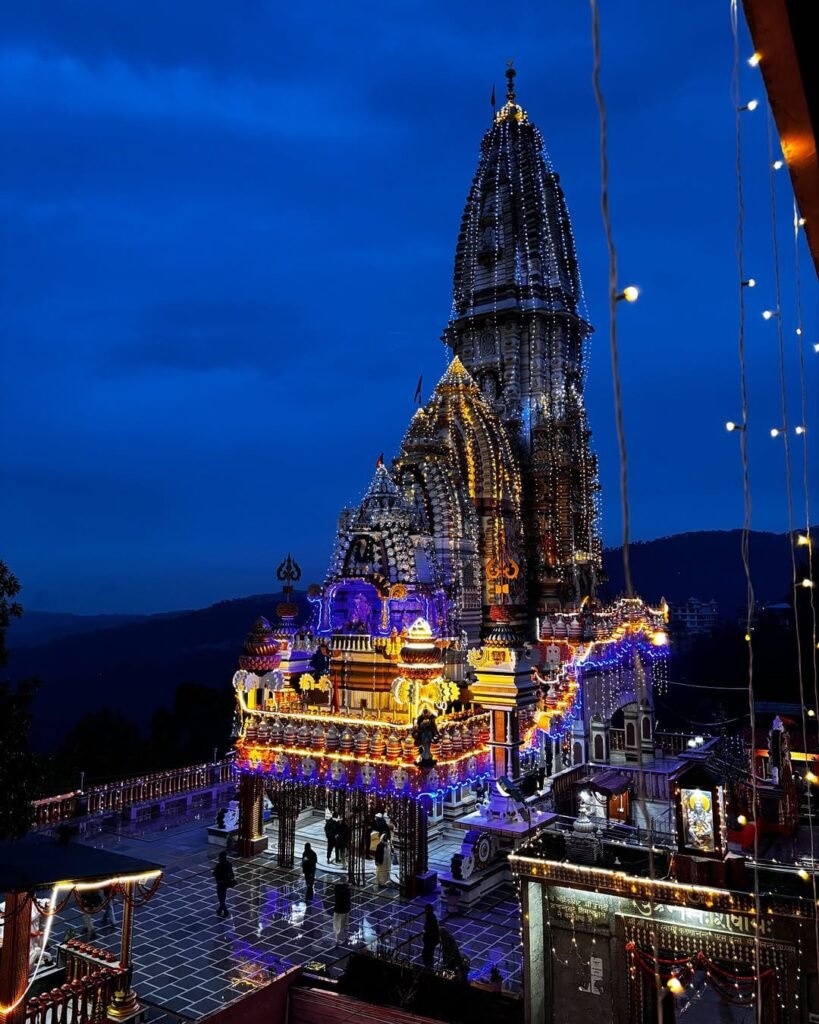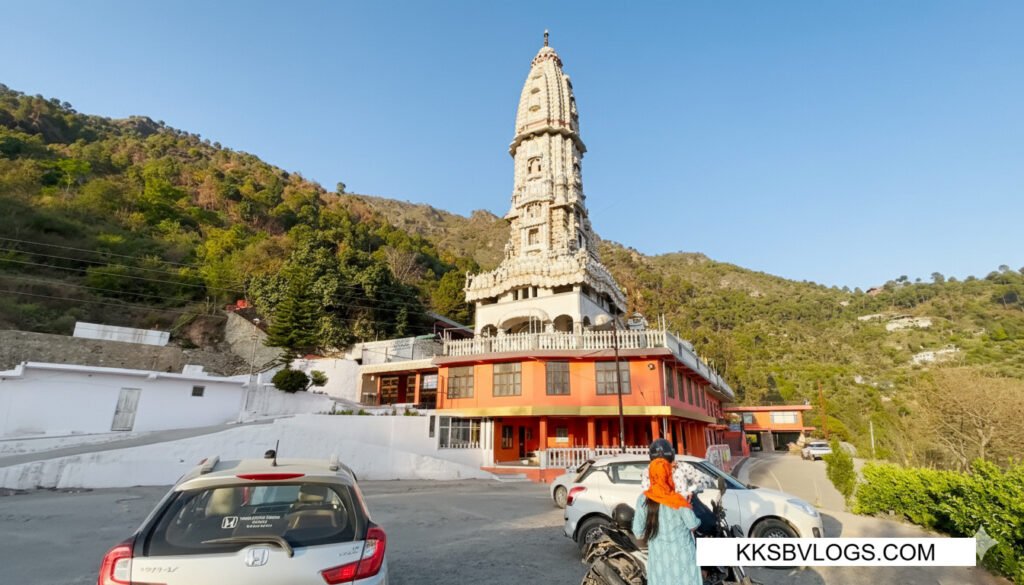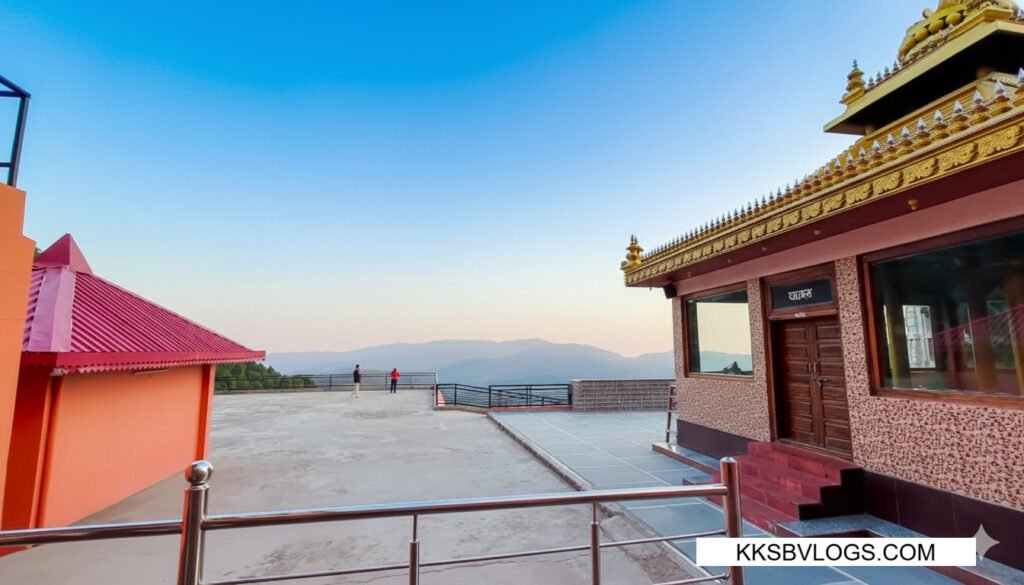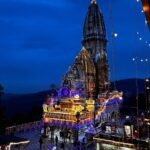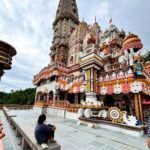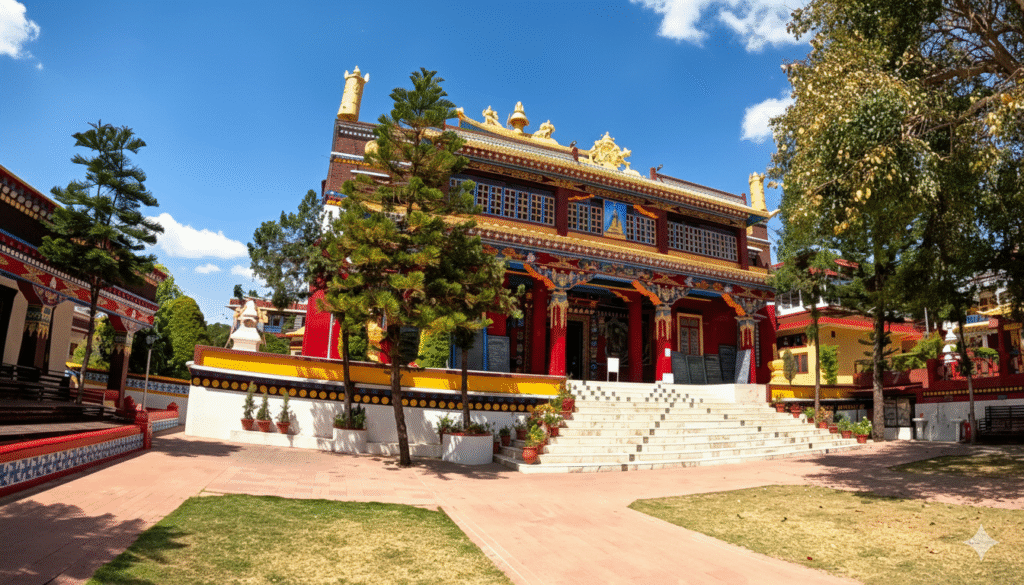1). Introduction
Located in Solan district of Himachal Pradesh, Jatoli Shiv Temple is a sacred site where faith, architecture, and the natural beauty of the mountains come together. With its 111-feet high shikhara, this temple is famous as the world’s tallest Shiva temple. Derived from the jata, or matted hair, of Lord Shiva, the name Jatoli reflects the belief that this sacred ground once witnessed Bholenath’s meditation.
Today, Jatoli Shiv Temple stands not only as a place of worship but also as a symbol of spiritual heritage. The mountain breeze, ringing bells, devotional hymns, and the faith of devotees together create a divine sense of peace. Coming here is not limited to darshan—it is a journey that calms the mind and uplifts the soul. If you are exploring the famous temples of Himachal, Jatoli Shiv Temple must be on your wish list.
2) History & Significance
The history of Jatoli Temple is like a story—where folklore, faith, and community effort all come together.
Mythological Roots: According to local beliefs, this is the place where Lord Shiva opened his jata and meditated in a cave. From this came the name Jatoli—jata + aawasthaan (abode of hair). Even today, that cave is considered very sacred. People say the calm energy here stabilizes the mind and grants wishes.
Construction Journey: This temple wasn’t built by a single patron, but through collective contribution. Local villagers and others helped with money, labor, and service. Construction continued for nearly 39 years, and finally in the 2010s its 111-feet tall shikhara became an iconic symbol of Solan valley.
Why It’s Tallest: India has many Shiva temples , but Jatoli Shiv Temple is uniquely recognized for its 111-feet height. When the sun’s rays fall on the silver kalash at the top, the whole temple glows—a dreamlike frame for travelers and photographers.
Cultural & Spiritual Importance: On Mahashivratri and Sawan Mondays, grand poojas are held here, making the temple a vibrant center of devotion. IIts sacred Jal-Kund is renowned, with devotees believing in its medicinal benefits.. Devotees pray for jobs, health, education, or family well-being, and return to offer thanks when their wishes are fulfilled.
Living Heritage: The temple’s architecture blends North and South Indian styles—layered shikhara, symmetric mandap, and marble carvings make it a masterpiece. It’s a heritage site where both devotion and art walk hand in hand.
👉 In short, Jatoli Shiv temple story isn’t limited to facts and dates—it’s a fusion of faith + art + community spirit, turning a simple “visit” into a soulful “experience.”
3) Architectural Highlights
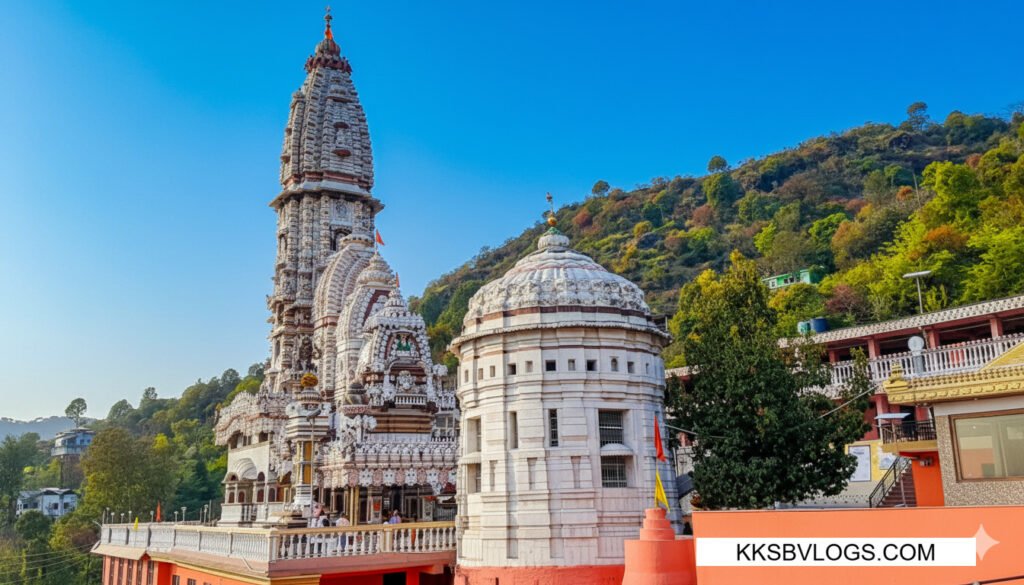
111-Feet Tall Shikhara: From afar, the towering spire looks as if it is touching the sky. The silver kalash gleams from a distance, attracting travelers.
Sacred Cave (Gufa): A cave near the temple, linked to Shiva’s meditation. Sitting here feels like natural meditation.
Jal-Kund (Sacred Tank): The water is believed to be medicinal. Even the sound of its rippling waves gives deep peace.
Fusion of Styles: A unique blend of North and South Indian temple designs makes this an architectural wonder.
Carvings & Details: Motifs on doors, boundary carvings, and the courtyard layout make Jatoli stand out.
Langar Bhandara: Every Sunday, free community meals are served here for devotees.
4) Things to See at Jatoli Shiv Temple
Main Temple & 111-Feet Shikhara:The sky-touching shikhara is the first thing to catch your eyes. Inside the sanctum, the Shivling with ringing bells and incense fragrance gives a divine feel.
Sacred Cave (Tapasya Sthal):Cool breeze and a calm environment inside the cave create a unique vibe. Devotees pray, meditate, and sometimes enjoy bhajan-kirtan here.
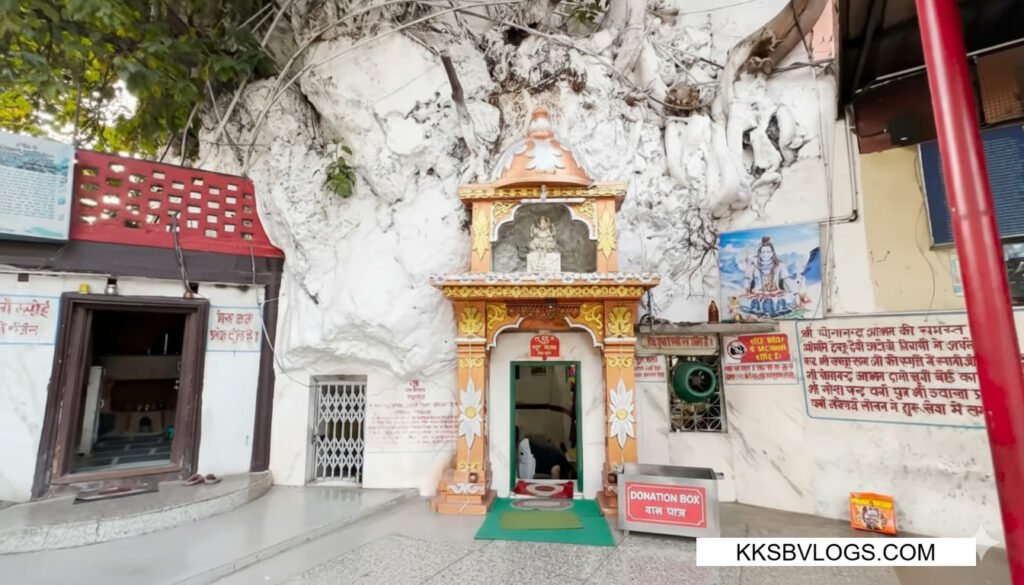
Jal-Kund (Sacred Water Tank):Sitting by the Kund and looking at the hills brings inner calm. Locals believe this water is sacred and medicinal. A Shivling is also established near the Kund—devotees pour water on it and feel a special energy.
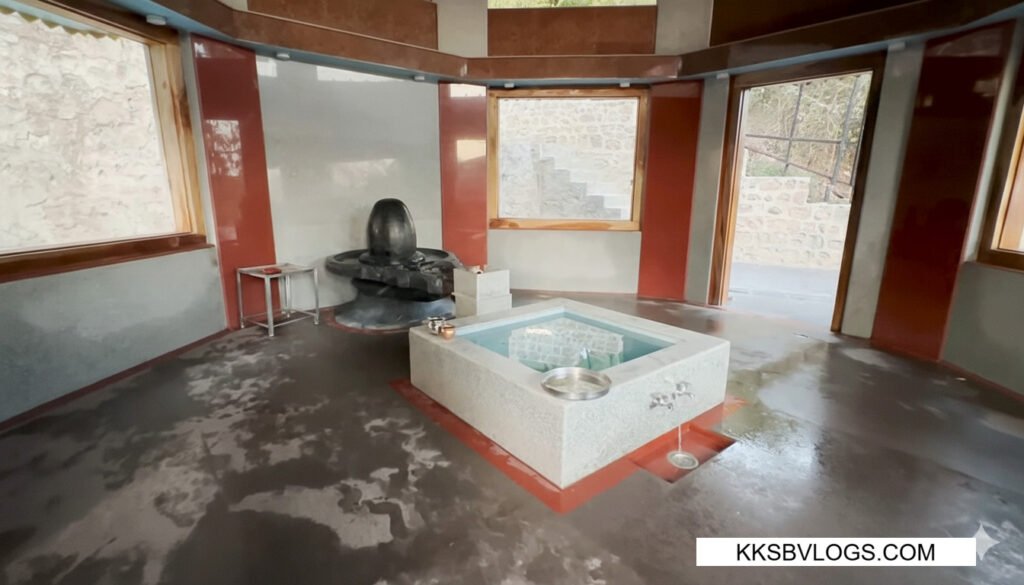
Festivals, Aartis & Community Vibe:During Mahashivratri and Sawan, the temple atmosphere reaches its peak—lamp decorations, hymns, processions, and bhandaras. Morning and evening aartis are soulful experiences (evening aarti is highly recommended).
Panoramic Views & Photography:From the campus, breathtaking views of Solan valley unfold. Sunrise and sunset golden frames are perfect for photographers and vloggers. Believe me, you’ll end up clicking countless photos here.
5) How to Reach Jatoli Shiv Temple
📍 Exact Setting: Jatoli Shiv Temple is around 7–8 km from Solan town (Himachal Pradesh). The road approach is smooth and vehicles can go till the last stretch.
From Solan (City Center / Bus Stand):
Local taxis/autos are easily available. Within 15–25 minutes you will reach Jatoli. It is best to search “Jatoli Shiv Mandir” on Google Maps. You can also reach Jatoli Shiv Temple from the map given at the end of this blog.
From Chandigarh (Approx 55–60 km to Solan; ~73 km till campus routes):
Take NH-5 → Dharampur → Solan. After reaching Solan, follow the local route for Jatoli. Total time 1.5–2.5 hours depending on traffic. Private cab is a comfortable option for family trips.
From Shimla (Approx 45–50 km):
Take NH-5 towards Solan. The road is scenic; during monsoon lush green views can be seen. Time taken is 1–1.5 hours.
By Train (Kalka–Shimla Rail Line):
Nearest station: Solan Railway Station. From here take a taxi/auto and in about 7 km you will reach Jatoli. For heritage toy-train lovers, this route itself is an experience.
By Air:
Nearest major airport: Chandigarh. From the airport, hire a cab to come Solan → Jatoli. This is the most straightforward way.
Parking & Walking: Parking space is easily available near the temple. Inside the campus, both stairs and gentle slopes are available; for seniors walking comfortably is possible. In monsoon, non-slip footwear is helpful.
You can also go to the exact location of Jatoli Mandir through Google Map given at the end of the blog.
6) Best Time to Visit Jatoli Shiv Temple
Although you can visit Jatoli Shiv Temple in every season, but—
March–June (Summer Pleasant Season):
Weather remains soft and breezy. With mountain air and clear days, temple darshan + photography both give the best combination.
July–August (Monsoon / Sawan):
In Sawan, the ambience of Jatoli Shiv temple reaches another level. Here you can see aarti, bhajans, bhandaras, and processions. Roads can be slippery; carry non-slip shoes and light rain gear.
September–November (Post-Monsoon / Autumn):
Clean skies, bright views, and greenery—this is the best time to visit Jatoli Mandir if you love landscape photography. The sunlight here is also something you will definitely enjoy.
December–February (Winter):
Cold mornings, crisp air, and sometimes light snowfall on nearby hills. Attending the morning aarti while wearing warm layers feels very peaceful.
Pro Tip: Joining the early morning aarti or viewing the campus during golden hour feels the most divine. On festive days the crowd is high—plan accordingly.
Langar Bhandara: Every Sunday, free community meals are served here for devotees.
Every Sunday, Langar Bhandara (free community meals) is served here for devotees, so you can plan your Jatoli trip on a Sunday too.
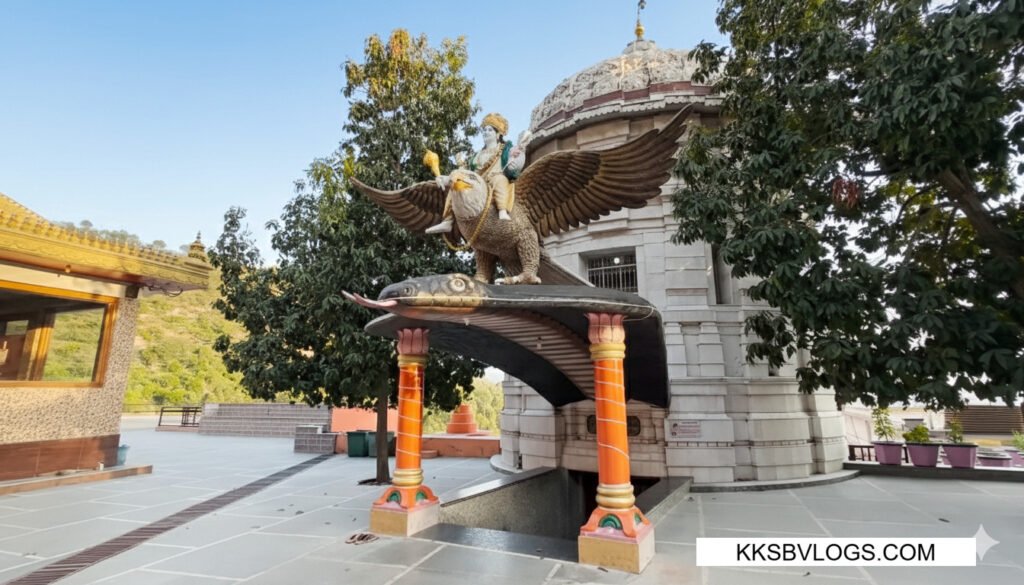
7) Visitor Information

Entry Fee: Free (donations welcome)
Temple Timings: Typically 5:00 AM – 10:00 PM (timings can extend during festivals)
Facilities: Parking, drinking water, washrooms, prasad stalls, sitting areas
Dress Code: Decent/traditional clothing preferred; respect temple discipline
Footwear: Must be removed near the sanctum; clean socks helpful in winters
Cleanliness & Conduct: Use less plastic, do not spread garbage near the temple; while doing photography respect the privacy of devotees
8) Our Experience at Jatoli
We keep visiting the Jatoli Mandir in Solan, Himachal Pradesh—such a spiritual place you rarely get to see. Sitting silently for 5 minutes inside the meditation cave at Jatoli Temple felt like a peaceful retreat in itself for us.
When we looked closely at the Jatoli Shiv Temple architecture, we realized how many beautiful artworks are there that give a completely different experience. The air was cool near the Jal-Kund (sacred water tank)—the mountain breeze, the green ridge lines stretching far away, and the temple standing majestically in the middle… honestly, it made us just want to sit and look even without the camera.
If we were covering nearby Solan tourist places, then starting from Jatoli Temple set the tone of the entire day. Like us, if you love Lord Shiv temple in Himachal Pradesh, you will definitely fall in love with this one.
9) Nearby Attractions
Shoolini Mata Temple (Solan City) – ~7 km
This ancient temple of Solan’s kuldevi Shoolini Mata is located in the heart of the city. Every year in June, the Shoolini Mela is organized here, which is a big festival of faith and local culture—the grand procession, cultural performances, and local bazaars make it special. Coming here, you will feel the complete spiritual circuit of Solan.
Mohan Shakti Heritage Park (Shilly Village) – ~25 km
A spiritual-cum-cultural park where Shri Krishna temple, mythological sculptures, landscaped gardens, and heritage museum can be found. Scenes of Mahabharata and Ramayana are visually depicted here—this place is also educational for families and students. It is perfect for photography and peaceful walks as well.
Karol Tibba Trek – ~10–12 km (base to trailhead)
Climbing to Karol Tibba is of medium difficulty, but the views reward you. The Karol Cave found on the route is linked by some people with the Pandavas—this story makes the trek even more interesting. After the monsoon, the greenery here is the most beautiful. But according to me, you should avoid going here during monsoon.
Kasauli – ~25–30 km
Filled with colonial charm, Kasauli is famous for its Christ Church, Mall Road, and Gilbert Trail. The weather here is pleasant and the cafes cozy—if you want a weekend hill-station vibe, then after Jatoli, Kasauli is the perfect extension. The sunset point views are memorable.
Solan Mall Road – ~6–7 km
For local shopping, Himachali snacks, and evening walks, Solan Mall Road is the best. The vibe here is simple but lively—with tea, bun-samosa, and bakery flavors, spending some time here nicely wraps up your Solan itinerary.
📍 Jatoli Mandir Location, Photos & Videos
YouTube Video:Coming soon on – KKSB Vlogs
Instagram Updates: Stay connected with us for reels and updates– @official_kksb
Jatoli Temple Photos
Jatoli Shiv Temple Vlog
Location Of Jatoli Shiv temple
you
FAQ’s About Jatoli Shiv Temple
Where is Jatoli Shiv Mandir, and how far is it from Solan?
Why is Jatoli Shiv Mandir called the world’s tallest Shiva temple
What are the entry fee and timings at Jatoli Mandir?
Entry is free; donations are accepted from devotees. Timings are generally 5:00 AM to 10:00 PM; during major festivals (Mahashivratri, Sawan) the aarti and darshan timings can be extended.
Is photography allowed? Where are the best shots?
Yes, Photography is permitted in the temple premises outside, but strictly prohibited inside the sanctum. We kindly request all devotees and visitors to respect this guideline. During golden hour (morning/evening), the shikhara, Jal-Kund, and panoramic valley frames come out the most beautiful.
What can be seen near Jatoli Mandir (nearby attractions)?
You can cover Shoolini Mata Temple, Mohan Shakti Heritage Park, Karol Tibba Trek, Kasauli, and Solan Mall Road. All these places are short drives away and complete your Solan nearby attractions itinerary.
What is the best time to visit Jatoli Mandir?
Although you can come here any time of the year, for weather March–June and September–November are best. For spiritual vibe, Sawan and Mahashivratri feel most special. In winters, the morning aarti with cold breeze feels very peaceful.
Is this spot comfortable for families/senior citizens?
Yes, there is road access and parking till the campus. Inside, both stairs and gentle slopes are available—seniors can walk comfortably. In monsoon, non-slip footwear is helpful. This is one of the best visits for senior citizens.
Are there any dress code or conduct rules in the temple?
There is no formal written code, but decent/traditional clothing is preferred. Footwear has to be removed near the sanctum. While photographing, respect devotees’ privacy and temple discipline.
Are facilities like prasad, water, and washrooms available?
Yes, drinking water, washrooms, and prasad stalls remain available. On festive days, bhandaras are also organized. Please keep the campus clean—use dustbins.
How to reach Jatoli Mandir from Chandigarh/Shimla?
From Chandigarh, take NH-5 → Solan; from there take the local road for Jatoli—total roughly 1.5–2.5 hours. From Shimla, follow NH-5 downhill to Solan (1–1.5 hours). Public transport + short taxi ride is the most convenient combination.



